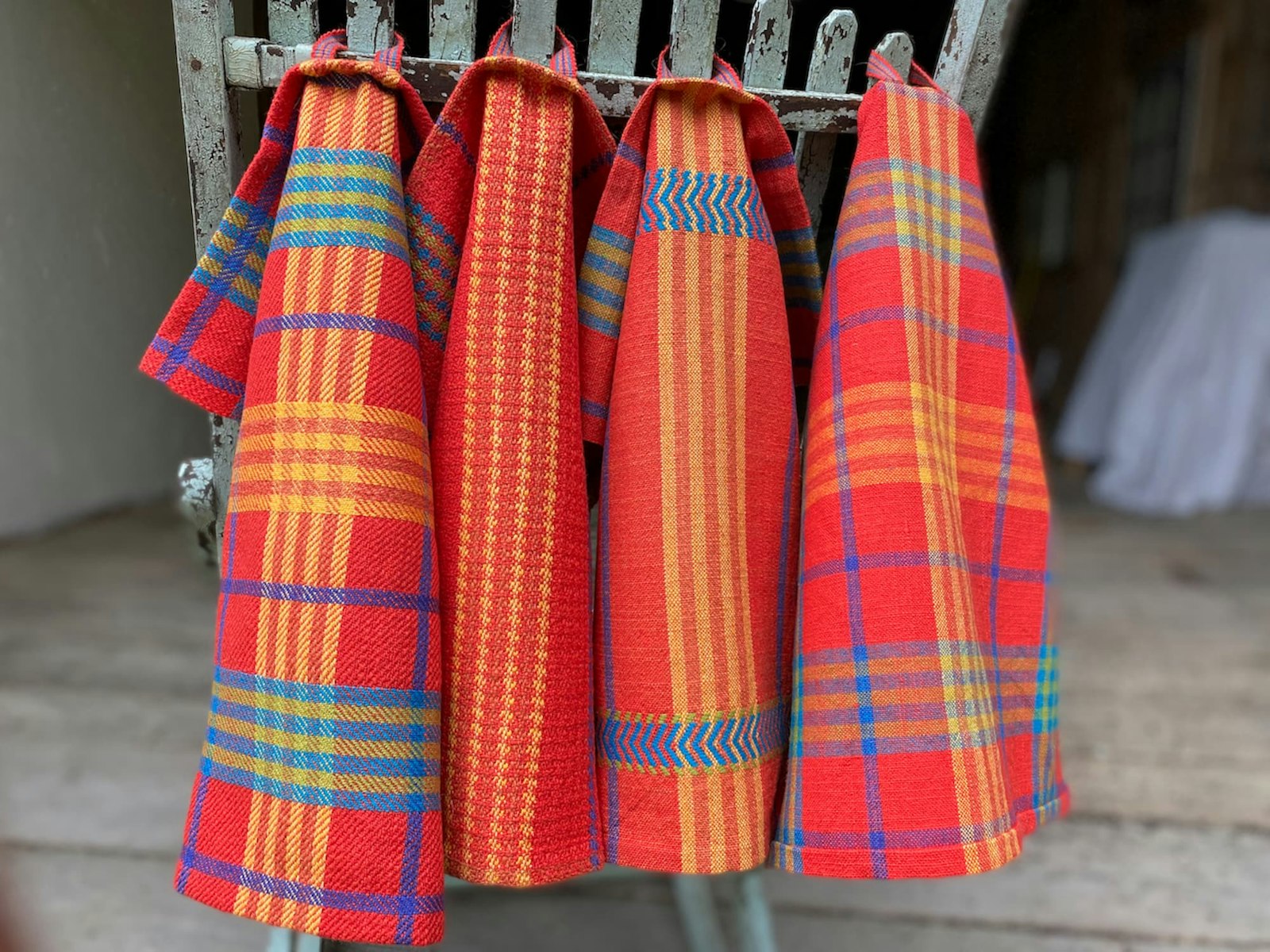Functional textiles are my bag, and that means a lot of towels, blankets, pillows, curtains, and rugs. I have a collection of looms that meet my needs, from a 15" rigid heddle to a 60" dobby to a hefty rug loom, but among the crowd are my two inkle looms, and they are little jewels.
 Inkle bands make beautiful edging for handwoven pillows.
Inkle bands make beautiful edging for handwoven pillows.
I love my inkle looms for a few reasons. They are small and portable (not true regarding the rug loom!), and they are easy to warp in the interim between shutting down the big looms for the night and cooking dinner. They are efficient. I use leftover bobbins of yarn from the projects on the big looms to design bands that might be deployed as accessories or accents for my larger projects: hanging tabs for towels, edgings for pillows and blankets, curtain tabs, apron straps, pocket edgings, sewing accessories, and more. These bands can be as simple (plain weave) or as fancy (pick-up) as you choose. They are a great meditative activity for the post-dinner—too tired to tackle the big projects, no idle hands, couch time.
 Elisabeth keeps her inkle on its side while she warps. She also uses Texsolv heddles folded in half instead of making string heddles.
Elisabeth keeps her inkle on its side while she warps. She also uses Texsolv heddles folded in half instead of making string heddles.
I have a few tips and tricks that make inkle time fun time for me:
- I use my leftover bobbins to dress the inkle loom by leaving them in the shuttle, placing the shuttle on the floor, and winding directly from the shuttle. As a result, I design my bands on the fly, usually using colors that coordinate with whatever project I am weaving on my big looms and going with the flow regarding the amounts left on the bobbins.
- When I dress my inkle, I lay it on its side. I use painter’s tape to secure the starting end until I finish winding, then tie the beginning end to the last end to form a continuous loop.
- Instead of string heddles, I use Texsolv heddles folded over. I do this one-handed while keeping tension on my thread. Texsolv heddles don’t fray, are easy on fuzzier yarns, and are always the correct size.
- If I need lengths of different widths of bands, I will set up the inkle to the widest width I need, weave the length needed for the wide band, then cut threads evenly from both selvedges to create the narrower width and proceed to weave the narrow band.
- Instead of using a band shuttle, I wind my weft (usually double or triple strands of some of my warp threads) onto a Bob-EEZ plastic bobbin and beat with a Vävstuga band knife.
 These bands might be two different widths, but they were woven on the same warp.
These bands might be two different widths, but they were woven on the same warp.
Consider adding an inkle loom to your stable. It‘s so rewarding, and I love to see how others deploy their band build-up (it will happen!).
Originally published 2/1/2104; updated 4/24/2025

